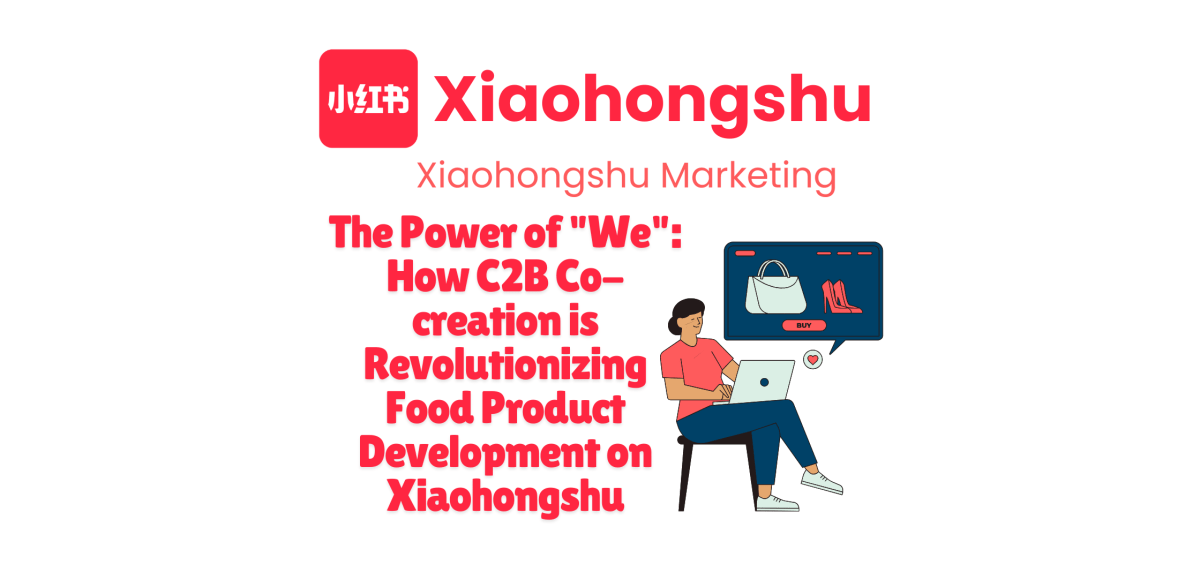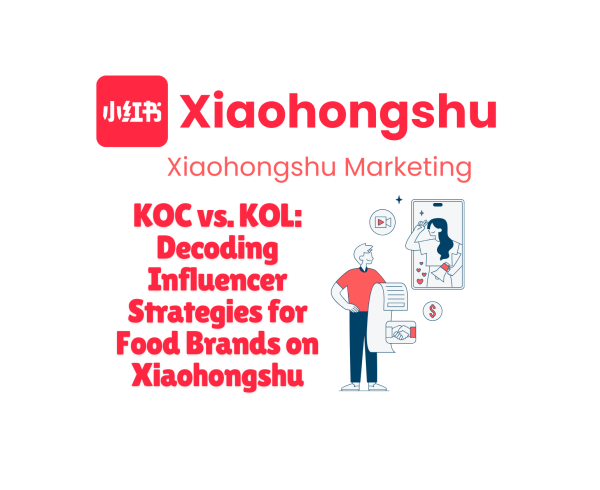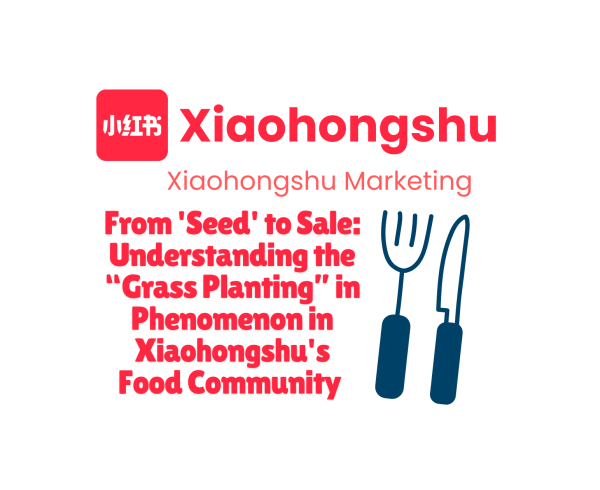The Power of “We”: How C2B Co-creation is Revolutionizing Food Product Development on Xiaohongshu
In the dynamic world of food and beverage, staying ahead of consumer trends is crucial for success. Xiaohongshu, with its vibrant community of users passionate about sharing their culinary experiences, has emerged as a prime platform for a revolutionary approach: C2B (Consumer-to-Business) co-creation. This collaborative strategy is transforming how food brands develop new products, ensuring they resonate with consumer preferences and achieve market success—making Xiaohongshu Marketing an essential part of modern food innovation.
Understanding C2B Co-creation
C2B co-creation is a business strategy that actively involves consumers in the various stages of product development. Instead of relying solely on internal research and development, brands tap into the collective intelligence, creativity, and feedback of their consumer base. This collaborative process can take many forms, from soliciting ideas and feedback on social media to organizing online or offline workshops where consumers actively participate in designing and refining products.
Xiaohongshu: A Fertile Ground for C2B
Xiaohongshu’s unique ecosystem makes it an ideal platform for C2B co-creation in the food industry:
- Engaged and Passionate Community: Xiaohongshu users are known for their enthusiasm for food. They love to explore new flavors, share their culinary creations, and provide detailed feedback on their dining experiences. This engaged community provides a rich pool of potential co-creators.
- Trendsetting Platform: Xiaohongshu is a hub for food trends. Users are constantly sharing innovative recipes, discovering unique ingredients, and experimenting with new food combinations. Brands can leverage this trendsetting environment to identify emerging consumer preferences and incorporate them into product development.
- Visual-First Culture: The platform’s emphasis on visual content makes it easy for brands to showcase product concepts, gather feedback on packaging and presentation, and co-create visually appealing food products.
- Direct Interaction with Consumers: Xiaohongshu facilitates direct communication between brands and consumers. Brands can easily interact with users, solicit feedback, and build relationships with potential co-creators.
Benefits of C2B Co-creation in Food Product Development
Adopting a C2B co-creation approach on Xiaohongshu offers numerous benefits for food brands:
- Enhanced Product-Market Fit: By involving consumers in the development process, brands can ensure that their products align with consumer preferences, needs, and desires. This reduces the risk of launching products that fail to resonate with the target market and increases the likelihood of success.
- Increased Innovation: Co-creation can spark creativity and lead to the development of unique and innovative food products. Consumers often bring fresh perspectives and ideas that may not have been considered by internal teams.
- Stronger Brand-Consumer Relationships: Co-creation fosters a sense of collaboration and partnership between brands and consumers. This can lead to stronger brand loyalty, increased customer satisfaction, and positive word-of-mouth marketing.
- Reduced Development Costs: By leveraging consumer feedback and insights, brands can streamline the development process, avoid costly mistakes, and optimize resource allocation.
- Effective Marketing and Buzz Generation: Co-created products often generate excitement and buzz within the Xiaohongshu community. Consumers who have been involved in the development process are more likely to share their experiences and promote the product to their followers.
Strategies for Implementing C2B Co-creation on Xiaohongshu
Here are some effective strategies for food brands looking to implement C2B co-creation on Xiaohongshu:
Identify Target Consumers: The first step is to identify the specific consumer segments that the brand wants to target. This involves understanding their demographics, psychographics, food preferences, and lifestyle. Xiaohongshu’s user data and analytics can be valuable in this process.
Create Engaging Content and Communities: Brands should create engaging content that encourages consumers to share their food experiences, preferences, and ideas. This can include posts that ask for feedback on potential product concepts, cooking challenges that inspire creativity, or discussions about food trends.
Solicit Ideas and Feedback: Brands can use various methods to solicit ideas and feedback from consumers. This can include:
- Polls and Surveys: Conduct polls and surveys to gather quantitative data on consumer preferences.
- Open-Ended Questions: Ask open-ended questions to encourage consumers to share detailed feedback and suggestions.
- Idea Submission Contests: Organize contests that invite users to submit their innovative food product ideas.
Co-create Product Concepts: Brands can take the co-creation process a step further by involving consumers in the actual design and development of products. This can include:
- Online Workshops: Host online workshops where consumers can brainstorm product ideas, provide feedback on prototypes, and contribute to the development of recipes and packaging.
- Taste Tests: Organize virtual or in-person taste tests where consumers can sample and evaluate different product variations.
- Packaging Co-design: Involve consumers in the design of product packaging to ensure it is visually appealing and resonates with the target audience.
Incentivize Participation: To encourage consumer participation, brands should offer incentives such as:
- Exclusive Access: Provide co-creators with early access to new products or limited-edition items.
- Recognition and Rewards: Acknowledge and reward co-creators for their contributions. This could include featuring them in marketing campaigns or offering discounts and free products.
Maintain Transparency and Communication: Throughout the co-creation process, brands should maintain open and transparent communication with consumers. Provide regular updates on the progress of product development, acknowledge feedback, and explain how consumer input is being used.
Examples of Successful C2B Co-creation in the Food Industry
Several food brands have successfully leveraged C2B co-creation to develop popular products:
- Lay’s “Do Us a Flavor” Contest: This annual contest invites consumers to submit their ideas for new Lay’s potato chip flavors. The winning flavor, chosen by consumer vote, is then produced and sold. This campaign not only generates excitement and engagement but also results in the creation of unique and consumer-approved flavors.
- Starbucks “My Starbucks Idea”: This online platform allows customers to share their ideas for improving the Starbucks experience, including new drink and food offerings. Starbucks has implemented many customer suggestions, demonstrating the power of listening to consumer feedback.
- Ben & Jerry’s Flavor Gurus: The ice cream company has a long history of involving fans in the development of new flavors. They often solicit suggestions from their community and even name flavors after their fans.
C2B Co-creation and Xiaohongshu’s Future
As Xiaohongshu continues to grow and evolve, C2B co-creation is poised to become an even more important strategy for food brands. The platform’s emphasis on community, authenticity, and user-generated content aligns perfectly with the principles of co-creation. Brands that embrace this collaborative approach will be well-positioned to develop innovative products, build strong consumer relationships, and thrive in the competitive food and beverage market.
Conclusion
C2B co-creation is revolutionizing food product development, and Xiaohongshu is at the forefront of this transformation. Tapping into the creativity, passion, and insights of real consumers through Xiaohongshu Marketing enables brands to craft food experiences that are both innovative and deeply personal. By embracing this collaborative approach, brands will not only stand out in a crowded marketplace but also build lasting relationships with their most important stakeholders—their customers.






